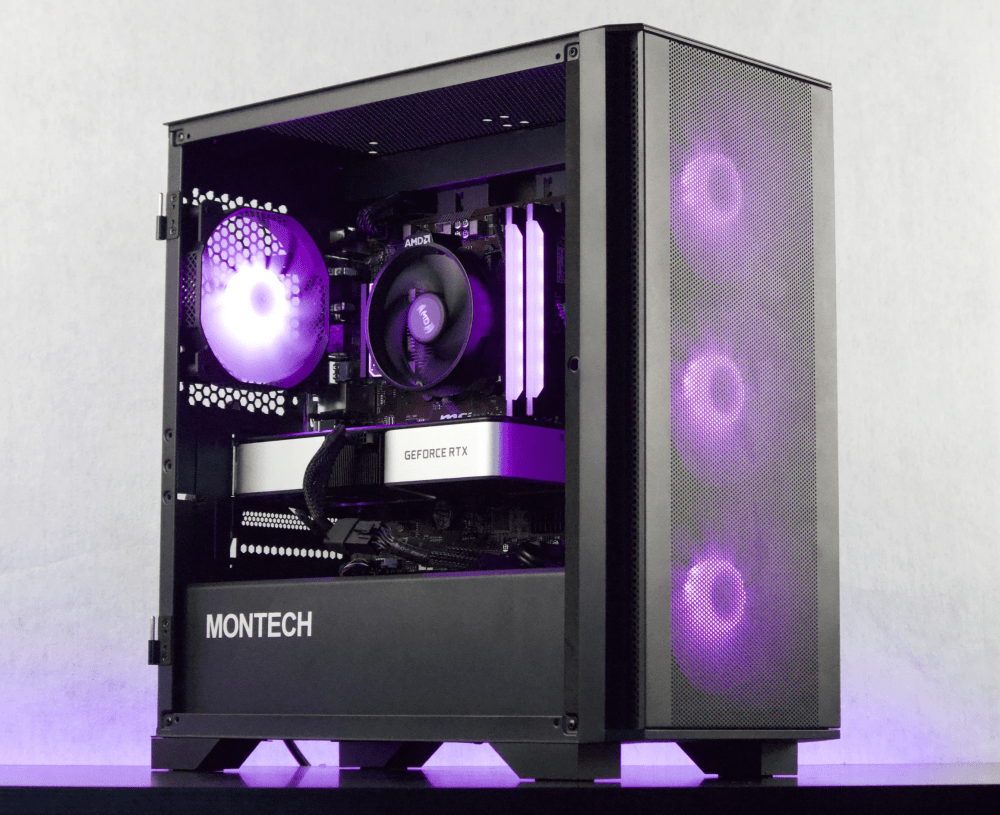As technology continues to advance, the demand for high-performance graphics processing units (GPUs) has never been greater. Whether you're a gamer, a graphic designer, or a data analyst, maintaining optimal GPU performance is crucial. One key aspect of ensuring your GPU runs smoothly is the application of thermal paste.
In this blog post, we will guide you through the process of applying thermal paste to your GPU. We will explain why thermal paste is necessary, the tools required for application, and the importance of cleaning your GPU beforehand. We will also cover the steps to properly apply thermal paste, ensuring even distribution for maximum effectiveness.
Once the thermal paste has been applied, we will walk you through the process of reassembling your GPU, including properly seating it and reconnecting all necessary cables. We will also discuss the importance of testing your GPU after reassembly to ensure everything is functioning correctly.
Furthermore, we will provide tips for maintaining your GPU after thermal paste application, such as regular cleaning and monitoring of temperatures. We will also address when it is time to reapply thermal paste to ensure your GPU continues to perform at its best.
By the end of this blog post, you will have a comprehensive understanding of how to apply thermal paste to your GPU and the impact it can have on its performance. So, let's dive in and learn how to optimize your GPU's cooling system for ultimate performance!
Understanding the Basics: Importance of Thermal Paste on a GPU
Thermal paste, also known as thermal compound or thermal grease, plays a crucial role in the efficient operation of a GPU. It is a substance that is applied between the GPU's integrated heat spreader (IHS) and the cooling solution, such as a heat sink or a cooling fan. The primary purpose of thermal paste is to improve heat transfer between the GPU and the cooling solution.
Heat is generated when the GPU is in operation, and if not effectively dissipated, it can lead to overheating. Overheating can cause a decrease in performance, instability, and even permanent damage to the GPU. This is where thermal paste comes into play, as it helps to fill in microscopic imperfections on the surface of the GPU and the cooling solution.
By filling in these imperfections, thermal paste creates a more direct and efficient thermal connection between the GPU and the cooling solution. This allows heat to be transferred more effectively, preventing hotspots and maintaining lower temperatures during operation.
Without thermal paste, there would be air gaps or uneven contact between the GPU and the cooling solution. These air gaps act as insulators, hindering the transfer of heat and causing higher temperatures. With the application of thermal paste, the contact between the GPU and the cooling solution is improved, leading to better heat dissipation and overall GPU performance.
In summary, the importance of thermal paste on a GPU can be highlighted as follows:
-
Improved heat transfer: Thermal paste fills in microscopic imperfections, enabling better contact between the GPU and the cooling solution, resulting in improved heat transfer.
-
Preventing overheating: By facilitating efficient heat dissipation, thermal paste helps prevent overheating, which can lead to performance degradation and potential GPU damage.
-
Maintaining optimal performance: Lower temperatures achieved through the use of thermal paste ensure that the GPU operates at its full potential, delivering smooth and consistent performance.
Now that we understand the importance of thermal paste on a GPU, let's move on to the next section, where we will discuss the preparation steps before applying thermal paste.
Preparation Before Application
Before applying thermal paste to your GPU, it is essential to properly prepare both the GPU and yourself. This section will guide you through the necessary preparation steps to ensure a successful application.
Why Thermal Paste is Necessary
Thermal paste is necessary because it helps to fill in microscopic gaps and imperfections between the GPU and the cooling solution. These gaps can hinder heat transfer and lead to higher temperatures, potentially causing performance issues or even GPU damage. By applying thermal paste, you create a more efficient thermal connection, allowing heat to be dissipated more effectively.
Tools Required for Thermal Paste Application
To ensure a smooth application process, gather the following tools:
-
Isopropyl alcohol (rubbing alcohol): This will be used for cleaning the GPU and removing any existing thermal paste.
-
Lint-free cloth or coffee filters: These are ideal for wiping down the GPU and ensuring a clean surface.
-
Thermal paste: Choose a high-quality thermal paste from reputable manufacturers. There are various options available, including silicone-based, metal-based, or hybrids.
-
Plastic spatula or credit card: These can be used to spread and distribute the thermal paste evenly.
-
Gloves (optional): Wearing gloves can help prevent any oils or dirt from your hands transferring onto the GPU.
-
Thermal paste remover (optional): If you're dealing with stubborn or old thermal paste, a thermal paste remover can make the cleaning process easier.
Cleaning the GPU Before Application
Before applying new thermal paste, it is crucial to clean the GPU thoroughly. Follow these steps:
-
Power off and unplug your computer: This ensures your safety and prevents any accidental damage.
-
Remove the GPU from the computer: Depending on your setup, you may need to unscrew it from the motherboard or release any locking mechanisms.
-
Use isopropyl alcohol and a lint-free cloth or coffee filter to clean the GPU: Moisten the cloth or filter with the alcohol and gently wipe the GPU's surface to remove any dust, debris, or old thermal paste. It's important to be gentle and avoid applying excessive pressure.
-
Ensure the GPU is completely dry: Allow the GPU to air dry or use a clean, dry cloth to remove any remaining moisture.
By properly cleaning the GPU, you create a clean and optimal surface for the application of thermal paste. With the preparation complete, we can now move on to the next section, where we will discuss how to choose the right thermal paste for your GPU.
How to Apply Thermal Paste to Your GPU
Now that you have prepared your GPU and gathered the necessary tools, it's time to learn how to apply thermal paste to your GPU. This section will guide you through the process step by step, ensuring a proper and effective application.
Choosing the Right Thermal Paste
Before diving into the application process, it's important to choose the right thermal paste for your GPU. Consider the following factors:
-
Thermal conductivity: Look for thermal paste with high thermal conductivity, as this indicates its ability to transfer heat effectively.
-
Consistency: Opt for a thermal paste that has a good consistency, neither too runny nor too thick. This will make the application process easier and ensure proper coverage.
-
Durability: Consider the longevity of the thermal paste. Some pastes may require more frequent reapplications than others.
-
Compatibility: Check the compatibility of the thermal paste with your GPU. Ensure that it is suitable for the materials used in your GPU's construction, such as copper or aluminum.
Once you have chosen the appropriate thermal paste, you can proceed with the application process.
Application Techniques for Thermal Paste
There are several methods for applying thermal paste to your GPU. Here are three common techniques:
-
Dot Method: Apply a small dot of thermal paste, roughly the size of a grain of rice, onto the center of the GPU's integrated heat spreader (IHS). When you reassemble the GPU, the pressure will spread the paste evenly.
-
Line Method: Create a line of thermal paste along the center of the IHS. The length of the line should be approximately equal to the width of the IHS.
-
Spread Method: Use a plastic spatula or credit card to spread a thin layer of thermal paste evenly across the entire surface of the IHS. Ensure the layer is thin and covers the entire area.
Ensuring Even Distribution of Thermal Paste
Regardless of the application technique you choose, it's crucial to ensure even distribution of the thermal paste. This will maximize its effectiveness in transferring heat. Here are some tips:
-
Avoid applying excessive amounts of thermal paste. A thin, even layer is sufficient for optimal heat transfer.
-
When reassembling the GPU, ensure that the pressure applied is enough to spread the thermal paste evenly without creating air bubbles.
-
Double-check that the thermal paste covers the entire surface of the GPU's IHS.
By following these application techniques and ensuring even distribution, you can maximize the thermal paste's performance and maintain lower temperatures for your GPU.
With the thermal paste successfully applied, we can now move on to the next section, which covers the steps to reassemble your GPU.
Reassembling Your GPU After Application
After applying thermal paste to your GPU, it is important to reassemble it properly to ensure optimal performance and functionality. This section will guide you through the necessary steps to reassemble your GPU after applying thermal paste.
Properly Seating the GPU
-
Carefully align the GPU with the PCI-E slot on the motherboard.
-
Gently insert the GPU into the slot, making sure it is properly seated. Apply even pressure, but avoid using excessive force.
-
Secure the GPU in place by tightening the screws or fasteners, if applicable. Be cautious not to overtighten, as this could damage the GPU or the motherboard.
Reconnecting Necessary Cables
-
Reconnect any power cables or connectors that were disconnected during the disassembly process. Ensure they are securely connected to the GPU and power supply.
-
If your GPU requires additional cables for power, such as 6-pin or 8-pin connectors, make sure to connect them to the corresponding ports on the GPU.
Testing the GPU After Reassembly
-
Once the GPU is reassembled and all necessary cables are connected, power on your computer.
-
Monitor the GPU's temperature using monitoring software or BIOS settings. Ensure that the temperature remains within acceptable limits during idle and under load.
-
Run a benchmark or stress test to put the GPU under load and observe its performance. Check for stability and any signs of overheating or abnormal behavior.
-
If the GPU is performing as expected and the temperatures are within safe ranges, congratulations! Your GPU has been successfully reassembled after applying thermal paste.
However, if you encounter any issues such as overheating, instability, or abnormal performance, double-check the thermal paste application. Ensure that it was applied properly and that there are no air bubbles or excessive amounts of thermal paste.
In some cases, it may be necessary to disassemble the GPU again and reapply thermal paste if there are any issues with the initial application. Remember to clean the GPU and remove any existing thermal paste before reapplying.
With your GPU successfully reassembled and tested, you can now move on to the next section, which focuses on maintaining your GPU after thermal paste application.
Maintaining Your GPU After Thermal Paste Application
After applying thermal paste to your GPU and reassembling it, it's crucial to maintain proper care and monitoring to ensure optimal performance and longevity. This section will cover essential maintenance practices and monitoring techniques to keep your GPU running smoothly.
Regular Cleaning and Maintenance
-
Dust Removal: Regularly clean the GPU and its cooling solution to prevent the accumulation of dust and debris. Use compressed air or a soft brush to gently remove any buildup on the heatsink, fan blades, and other components. This will help maintain proper airflow and prevent overheating.
-
Fan Maintenance: Check the GPU's cooling fans regularly to ensure they are functioning correctly. Remove any dust or obstructions that may impede their performance. If necessary, consider lubricating the fan bearings following manufacturer guidelines.
-
Filter Cleaning: If your computer case has dust filters, clean or replace them periodically to prevent dust from entering the GPU and causing blockages.
Monitoring GPU Temperature
-
Software Monitoring: Utilize monitoring software, such as MSI Afterburner or HWMonitor, to keep track of your GPU's temperature in real-time. Monitor both idle and load temperatures to ensure they remain within safe operating limits.
-
GPU-Z: Use GPU-Z, a popular GPU monitoring tool, to check not only the temperature but also other vital GPU information such as clock speeds, memory usage, and fan speeds.
-
Custom Fan Curves: Consider creating custom fan curves using software like MSI Afterburner to optimize cooling efficiency. Adjust the fan speed based on temperature thresholds to keep the GPU cool under heavy loads.
When to Reapply Thermal Paste
-
Increase in GPU Temperatures: If you notice a significant increase in GPU temperatures over time, it may indicate the need for reapplication of thermal paste. Higher temperatures can be a sign of degraded thermal paste or poor contact between the GPU and cooling solution.
-
Performance Issues: If you experience performance degradation, such as decreased frame rates or system instability, it could be a result of inadequate heat dissipation. Reapplying thermal paste may help improve thermal transfer and restore optimal performance.
-
Timeframe: While thermal paste typically lasts for several years, it is generally recommended to consider reapplying it every 2-3 years or when you upgrade your GPU.
Remember to follow the proper cleaning and reapplication procedures outlined earlier when considering reapplying thermal paste.
By regularly maintaining your GPU and monitoring its temperature, you can ensure optimal performance and prevent potential issues. Now, let's proceed to the conclusion, where we will summarize the key takeaways of this blog post.
Conclusion: The Impact of Proper Thermal Paste Application on GPU Performance
Proper thermal paste application plays a vital role in maintaining optimal GPU performance and preventing overheating. By understanding the importance of thermal paste, preparing the GPU before application, choosing the right thermal paste, and applying it correctly, you can ensure efficient heat transfer and lower temperatures for your GPU.
Thermal paste fills in microscopic gaps and imperfections, creating a direct thermal connection between the GPU and the cooling solution. This improves heat transfer and prevents hotspots, leading to better GPU performance and stability.
Reassembling the GPU after thermal paste application requires proper seating and reconnecting necessary cables. It is essential to test the GPU after reassembly to ensure everything is functioning correctly and temperatures are within acceptable limits.
Maintaining your GPU after thermal paste application involves regular cleaning and maintenance, such as dust removal and fan maintenance, to prevent heat buildup and airflow obstruction. Monitoring the GPU's temperature using software and knowing when to reapply thermal paste are also crucial for long-term performance.
In conclusion, proper thermal paste application is essential for maximizing the performance and lifespan of your GPU. By following the steps outlined in this blog post and adopting good maintenance practices, you can ensure that your GPU operates at its best, delivering the smooth and reliable performance you desire.
Remember, the process of applying thermal paste may vary depending on the specific GPU manufacturer or model, so always refer to the manufacturer's guidelines and instructions for the most accurate information.
With this comprehensive guide, you are now well-equipped to apply thermal paste to your GPU and optimize its cooling system. Enjoy improved GPU performance and keep those temperatures under control!
Looking to upgrade your GPU? Check out Jawa for killer deals on new and used graphics cards.





